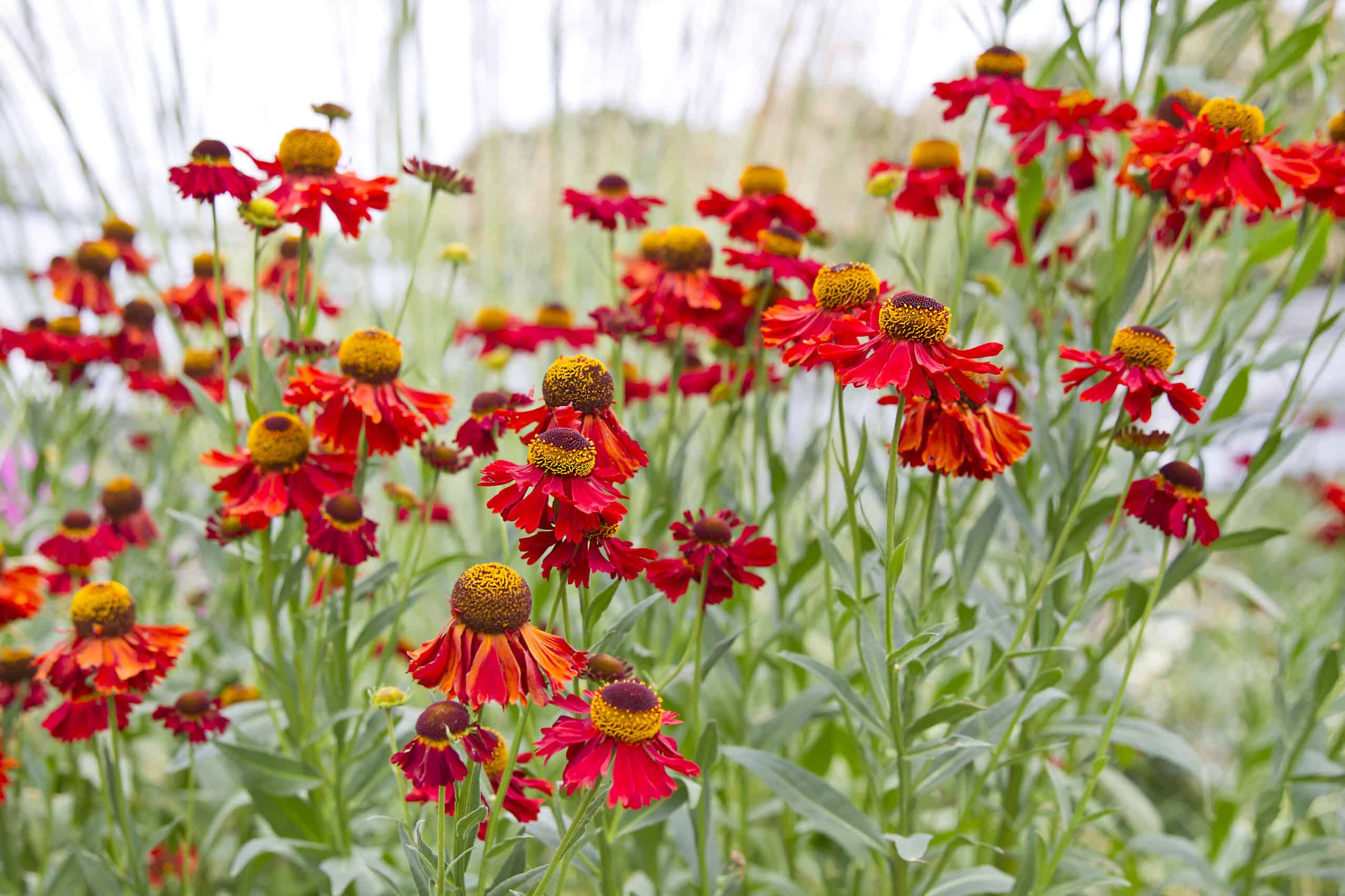Sometimes, deciding what flowers to plant in our space can prove difficult. After all, the internet and local garden centers have lovely flowers just begging to be planted in your yard. However, the key to growing successful flowers is to find those that will survive in your space. This task is made slightly easier for New Hampshire gardeners thanks to the range of USDA Hardiness Zones throughout the state. Residents will be able to grow plants that are hardy from zones 3 to 6. Take a moment to learn what your local growing zone is before purchasing anything. Once you do that, you just need to decide when you would like your flowers to bloom. One popular season for gardeners is fall since most everything else starts dying back. But you don’t have to do the research yourself! Below, we provide a handy guide to eight colorful flowers that bloom in the fall in New Hampshire gardens.
1. Anise Hyssop
Anise hyssop (Agastache foeniculum) is a perennial flower with countless uses. Not only do pollinators and hummingbirds love it, but it is also an important addition to traditional herbal medicine practices. This drought-tolerant flower produces magnificent flower spikes that blossom in a deep shade of purple or blue flowers. It belongs to the Lamiaceae (mint) family. So you can expect some delicious scents as well.
It can reach up to four feet tall at maturity and typically develops its blossoms in late summer or early fall. The good news is that this flower can tolerate nearly any condition. Feel free to plant it in a sunny or shaded spot and sandy soil.
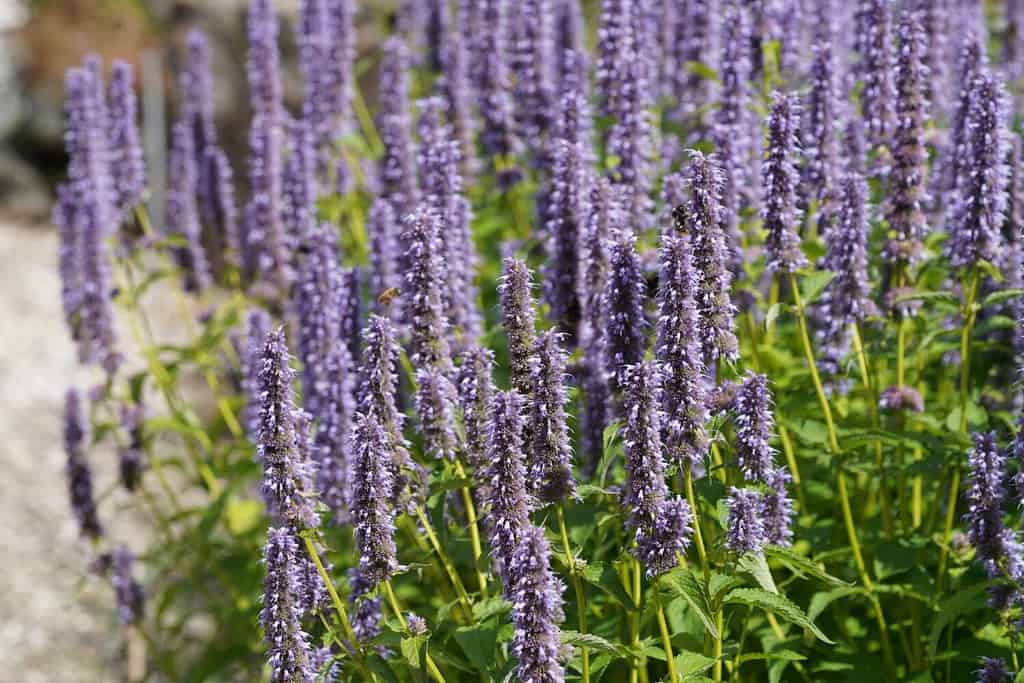
Anise hyssop produces magnificent flower spikes that blossom in a deep shade of purple or blue flowers.
©Doikanoy/Shutterstock.com
2. Bee Balm
No New Hampshire garden would be complete without the magnificent bee balm (Monarda spp.). And since it thrives in zones 3 to 9, anyone in the state can happily plant some. This jaw-dropping flower attracts loads of pollinators and hummingbirds. So, kick back and enjoy the show! Its bright red, purple, or pink flowers will make an eye-catching addition to your space. Bee balm is part of the Lamiaceae (mint) family. It is a North American native that averages four feet tall (but can get even taller).
While it does prefer full sun, this flower will tolerate a range of soil, including clay-based soil. It is deer and rabbit-resistant and only requires a moderate level of maintenance once it gets established.
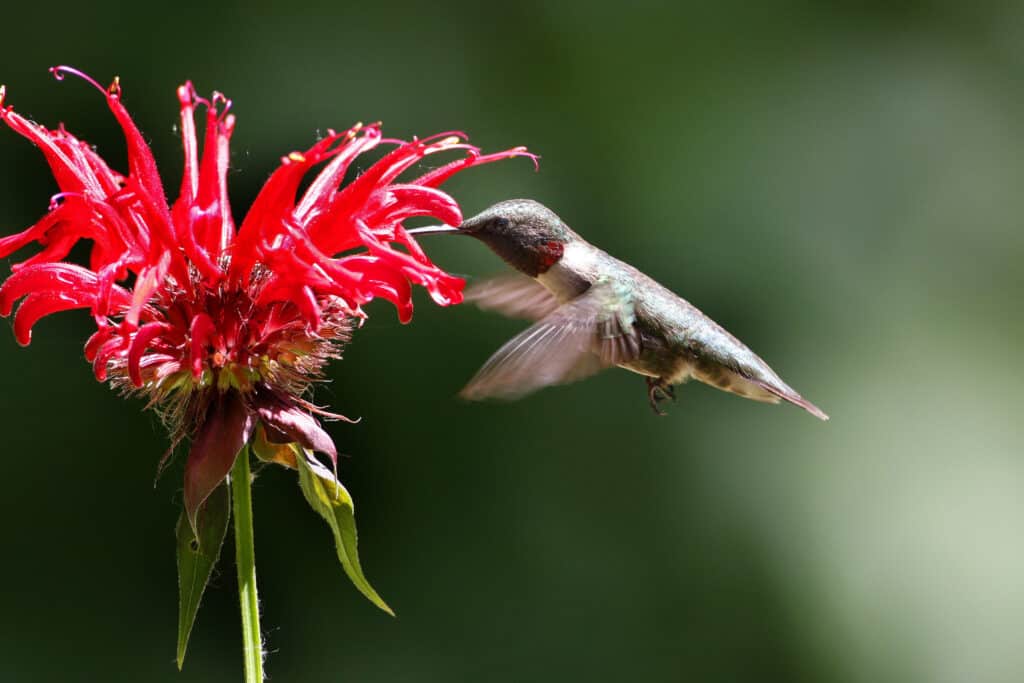
The shockingly bright colors that bee balm showcases annually attract plenty of hummingbirds and pollinators.
©Chris Alcock/Shutterstock.com
3. Daylilies
One highly popular flower that blooms in the fall is the daylily (Hemerocallis spp.) Plant this lovely flower in any New Hampshire garden since it thrives in USDA Hardiness Zones 3 to 9. We promise you won’t be disappointed! While this perennial typically doesn’t top one and a half feet tall, it makes up for its size with magnificent flowers. These blossoms arrive in the summer and can last through early fall. The possible colors include orange, gold, purple, burgundy, and pink, and pollinators flock to them!
These low-maintenance plants don’t need much to keep them happy. Plant your daylilies in soil that is rich in organic matter. After that, they’ll tolerate partial shade or full sun and moderate watering.
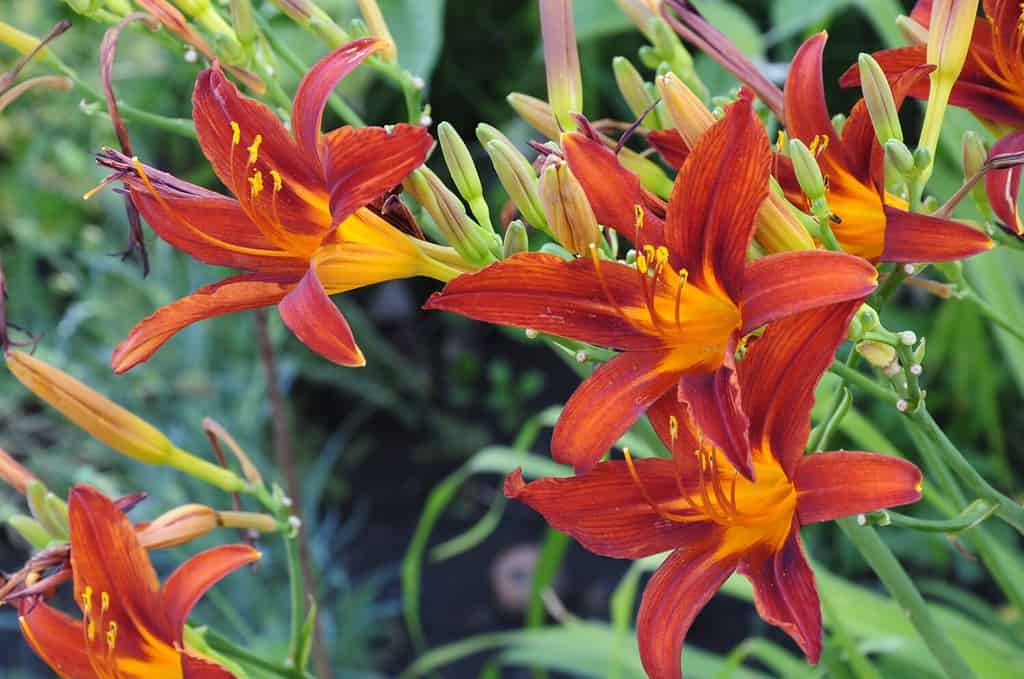
Thanks to their bright and beautiful blossoms, daylilies are a perennial favorite among gardeners.
©Fayka2008/Shutterstock.com
4. Helenium
These sunny and cheerful flowers will brighten up any flower garden. Helenium (Helenium autumnale) grows best in USDA Hardiness Zones 3 to 8, so they are perfect for the New Hampshire garden. It belongs to the Asteraceae (daisy) family and has the less than flattering common name – common sneezeweed. But don’t let the name fool you! It doesn’t make most people sneeze unless they try to inhale its pollen deeply.
This perennial flower reaches up to five feet tall and develops stunning yellow or orange blossoms every late summer and fall. Plant your helenium in rich, moist soil and ensure it receives plenty of sunlight. While bees love to feast on its nectar, you should not. All parts of this flower are toxic to humans.
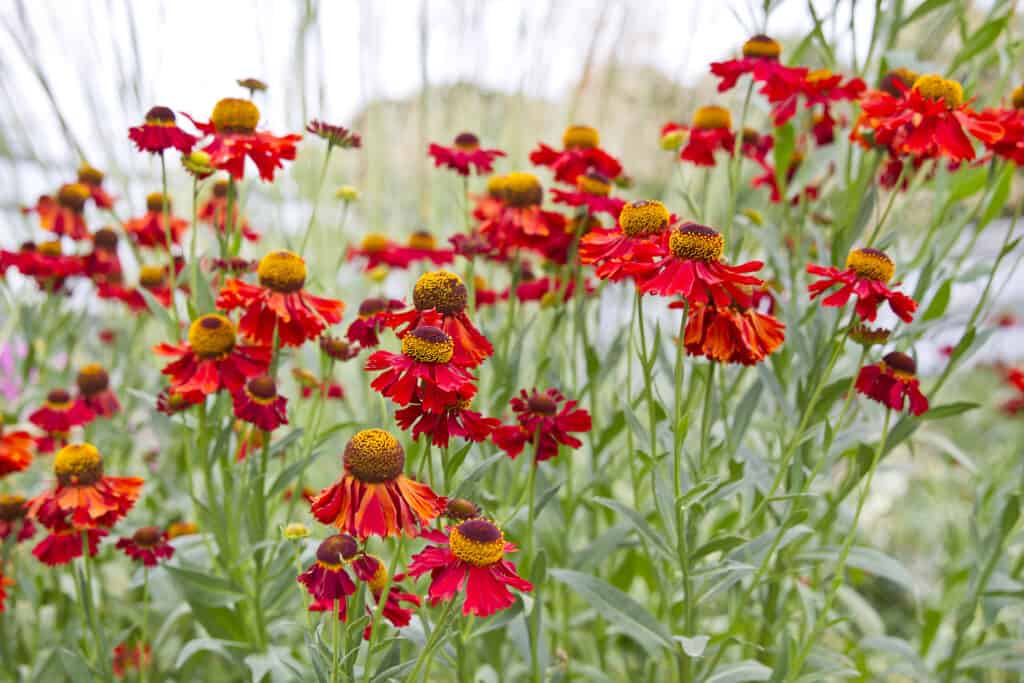
Helenium (or common sneezeweed) won’t actually make you sneeze unless you deeply inhale the pollen. But it will add color to your garden.
©iStock.com/sagarmanis
5. New England Aster
New England Aster (Symphyotrichum novae-angliae) will certainly add a statement piece to your yard or garden. This stunning plant reaches up to six feet tall at maturity. As its name suggests, it is native to New England and tolerates most of New Hampshire’s growing zones (4 to 8). Pollinators love this flower almost as much as you do!
The deeply pink or purple flowers reach peak blossom in October after a few months of showing off. This plant can tolerate full sun or partial shade and clay-based soil. All it needs to thrive is rich soil and consistent watering.
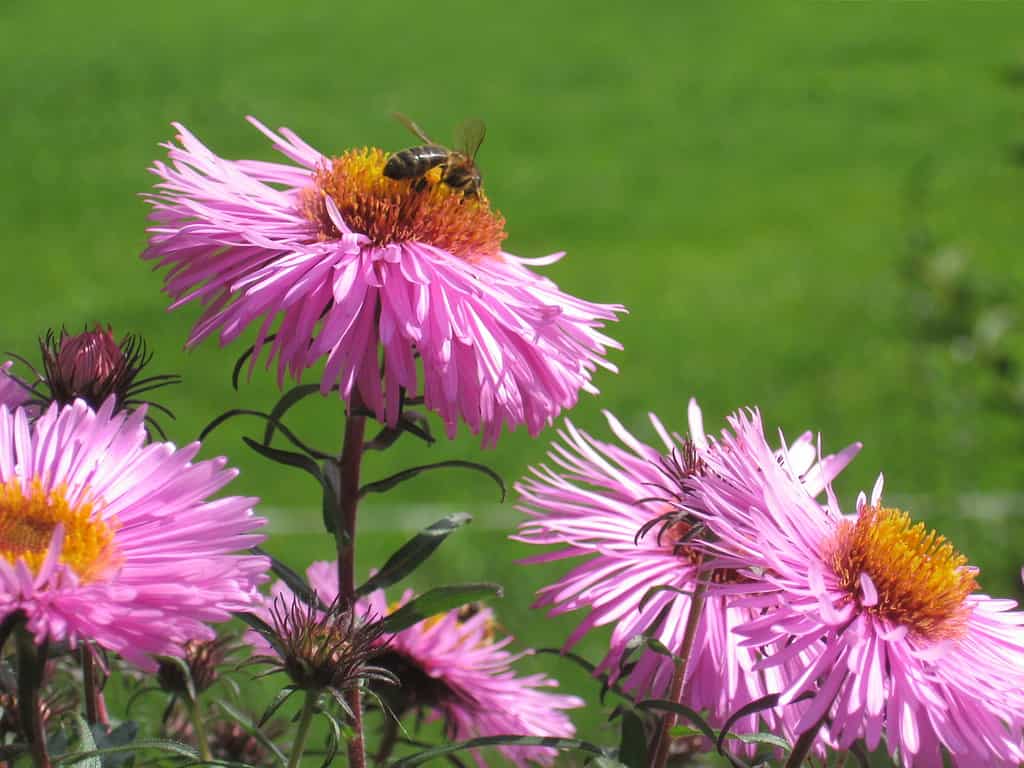
Pollinators love New England asters and spend plenty of time visiting them once the flowers bloom.
6. Stonecrop
Sedum spectabile ‘Autumn Joy’ (Stonecrop) is a terrific perennial plant for New Hampshire gardens. This succulent produces magnificent flowers. You can expect color-changing flowers and foliage throughout the fall, so you will never be bored with it. They finish out in a deep burgundy color that lights up your space. You aren’t the only ones who enjoy the blossoms. Pollinators will flock to your lovely stonecrop plants.
Plant your sedum in well-draining soil. However, it doesn’t need much more attention than that. This beautiful succulent tolerates sandy and poor soil and can even handle occasional partial shade. Most stonecrop varieties are hardy in zones 3 to 10.
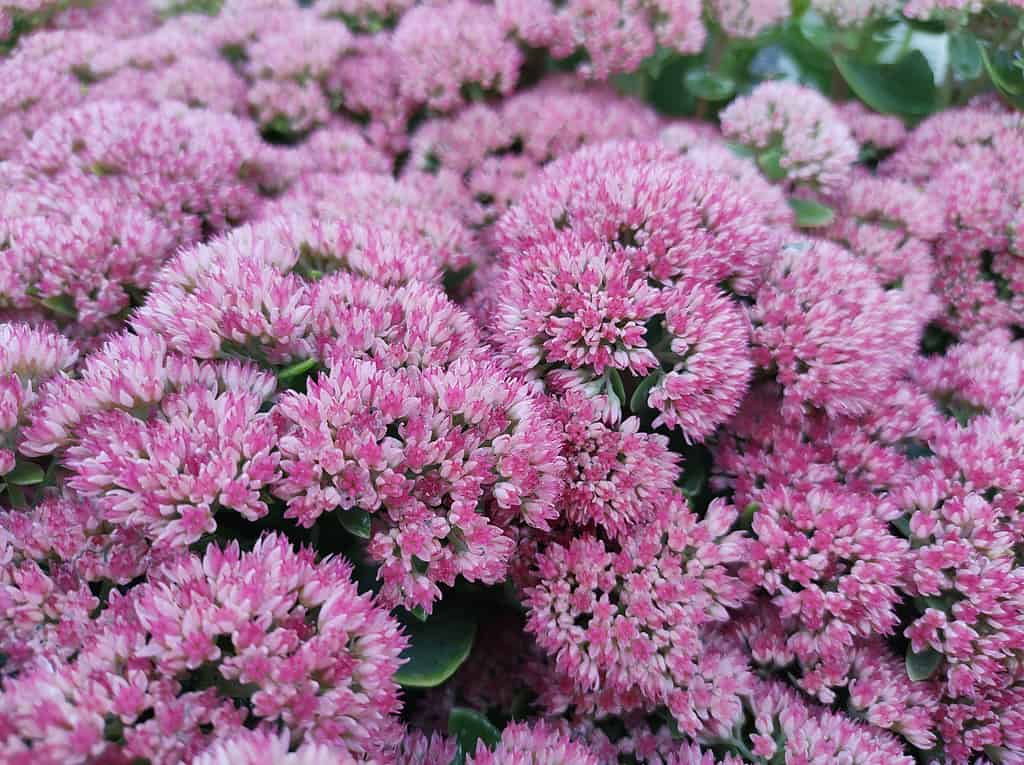
Sedum is a perennial succulent that showcases beautiful color-changing flowers every fall.
©John Caley/ via Getty Images
7. Tall Garden Phlox
Phlox paniculata (tall garden phlox) will put a smile on every face that visits your garden. These magnificent flowers thrive in zones 3 to 8, so all New Hampshire gardeners can enjoy their beauty! The plants themselves can reach up to six feet tall at maturity. And the terminal flower clusters arrive every fall for your enjoyment and to the delight of local pollinators. The blossoms are typically pink or purple, though you may occasionally get a white variety.
These perennial flowers are native to North America, and they need a fair amount of care. Plant them in loamy soil that can stay consistently moist. They require at least six hours of sun daily to thrive and for the stunning blossoms to appear. However, the most important point is to give them ample space and water from the bottom (ideally). These flowers are prone to powdery mildew, and the last thing you want is to lose your garden showcase.
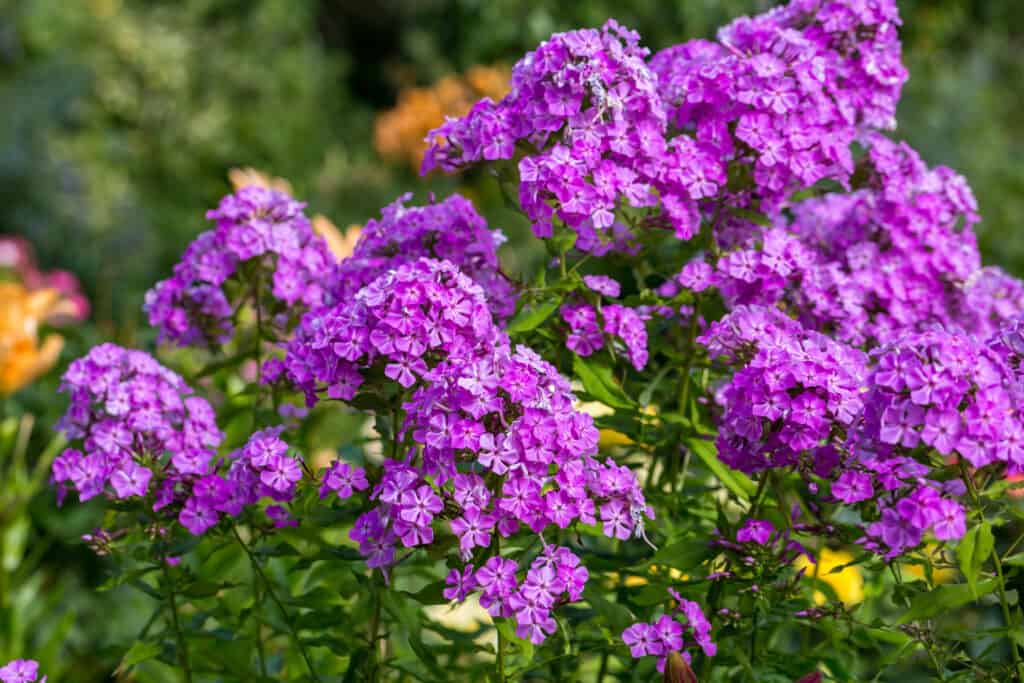
Tall garden phlox produces stunning pink or purple flowers every year. They arrive around late summer or early fall.
©S. O. E./Shutterstock.com
8. Turtlehead
This flower has a fascinating blossom that resembles a turtlehead, which is how it got its name. Turtlehead (Chelone lyonii) is native to North America and grows best in zones 4 to 7, although it can survive into zone 9 when properly cared for. It grows to roughly four feet tall and develops gorgeous pink flowers on the stem’s end. These purple, pink, or yellow blossoms arrive in the early fall and stick around until the first freeze.
Plant turtlehead flowers in a location that receives partial shade. It prefers consistently moist and rich soil.
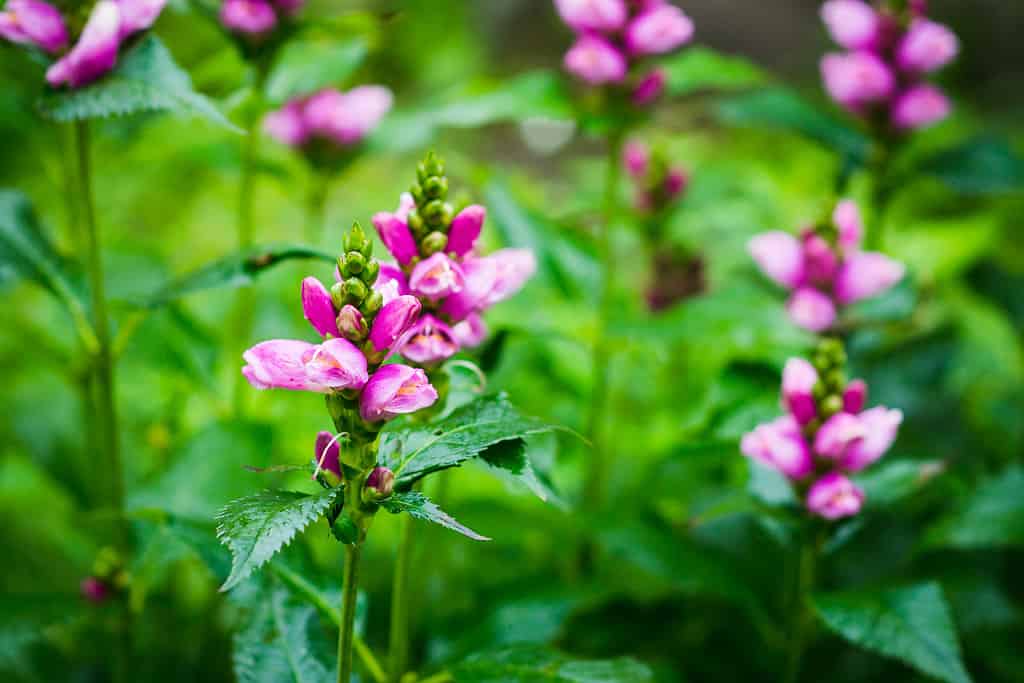
Pink turtlehead flowers are native to North America and beloved by pollinators.
©Mindstyle/ via Getty Images
Summary of the 8 Most Colorful Fall-Blooming Flowers in New Hampshire
| Number | Flower | USDA Hardiness Zone |
|---|---|---|
| 1 | Anise Hyssop | 4 to 9 |
| 2 | Bee Balm | 3 to 9 |
| 3 | Daylilies | 3 to 9 |
| 4 | Helenium | 3 to 8 |
| 5 | New England Aster | 4 to 8 |
| 6 | Stonecrop | 3 to 10 |
| 7 | Tall Garden Phlox | 3 to 8 |
| 8 | Turtlehead | 4 to 7 |
Thank you for reading! Have some feedback for us? Contact the AZ Animals editorial team.

